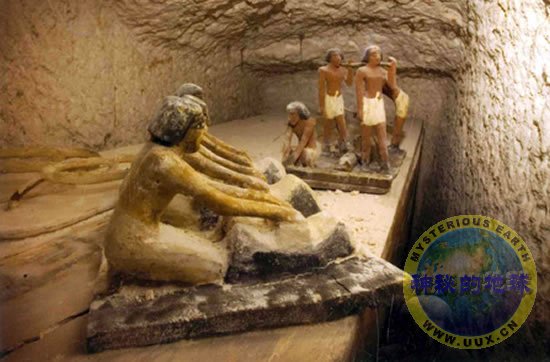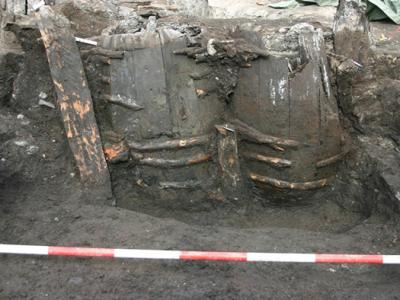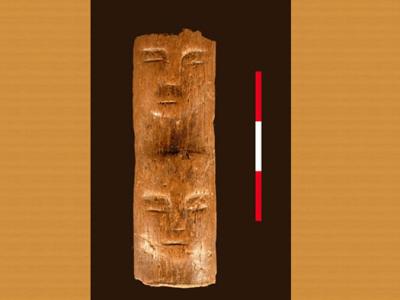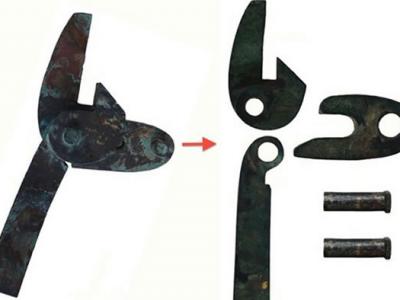Top Ten Archaeology Stories of 2007
9. Photo in the News: "Unusual" Tomb of Egyptian Courtier Found (May 21, 2007)
Archaeologists got a royal surprise when they stumbled upon the in-tact tomb, replete with "realistic" statuettes, of a powerful official of the Egyptian court from 4,000 years ago.
Updated May 23, 2007—Archaeologists got a royal surprise last week when they stumbled upon the tomb of a powerful official of the Egyptian court from 4,000 years ago.
Scientists from Belgium's Leuven Catholic University discovered the intact tomb in the Deir Al-Barsha necropolis in El Minya, about 150 miles (241 kilometers) south of Cairo, while excavating another burial site, Egypt's culture ministry reported Sunday.
The tomb is of Henu, a courtier and real estate manager during the tumultuous First Intermediate period (2181 to 2050 B.C.) of Egyptian history.
A cache of intact, painted statuettes of people at work, such as women making beer and pounding cereal, were arranged in the tomb. They were painted in red, white, and black, characteristic of the period, Zahi Hawass, Secretary General of Egypt's Supreme Council of Antiquities, told National Geographic News in a email.
Other statuettes featured a man working clay with a hoe and two other men carrying a bag of clay suspended from a pole. The men were depicted making mud bricks, which were used to build houses during the time, Hawass said.
The team also discovered a statuette of Henu in his official costume.
The mummy of Henu himself was wrapped in linen and placed in a large, wooden coffin, which was decorated with hieroglyphics. The coffin contained two wooden sandals lashed with rope.
Many of the objects feature "realistic touches and unusual details," Harco Willems, head of the Belgian team, said in a statement.
(Related: Ancient Flowers Found in Egypt Coffin [June 29, 2006].)
For instance, the ancient artists painted dirt on the hands and feet of their statuettes.
"The statuettes are considered the best quality of their time," Willems said.
Based on the number of artifacts in his tomb, Henu was likely a rich man, Hawass said. Henu may have worked for one of the powerful provincial governors of the time, called "nomarchs," who ruled like kings over their regions. No centralized king controlled the country at the end of the First Intermediate period.
One of Henu's titles was "the sole friend," Hawass noted, which usually refers to a close confidant of the king or a "nomarch."
—Christine Dell'Amore












